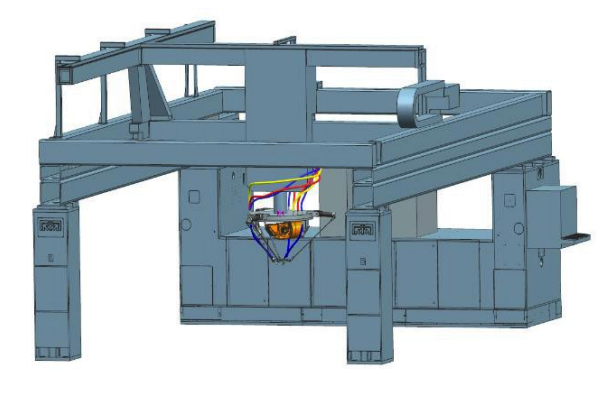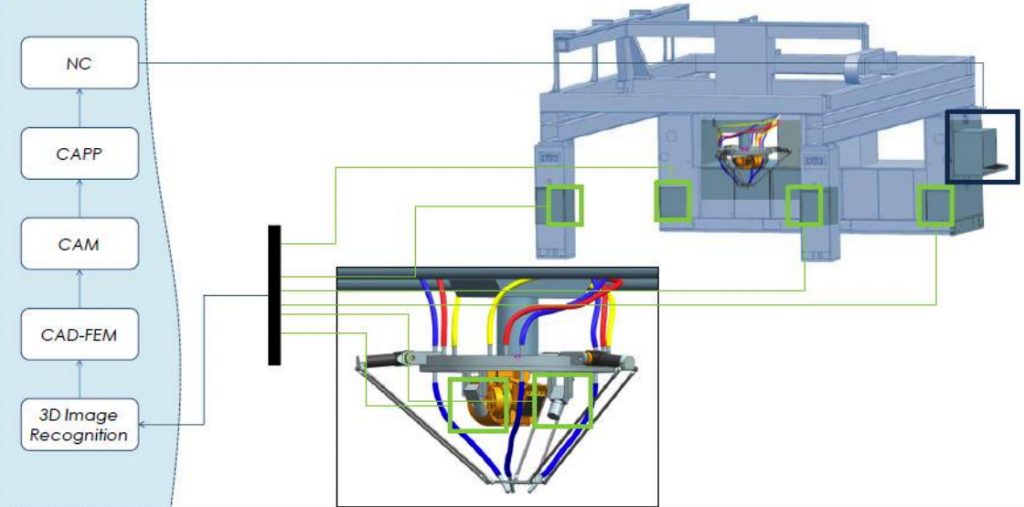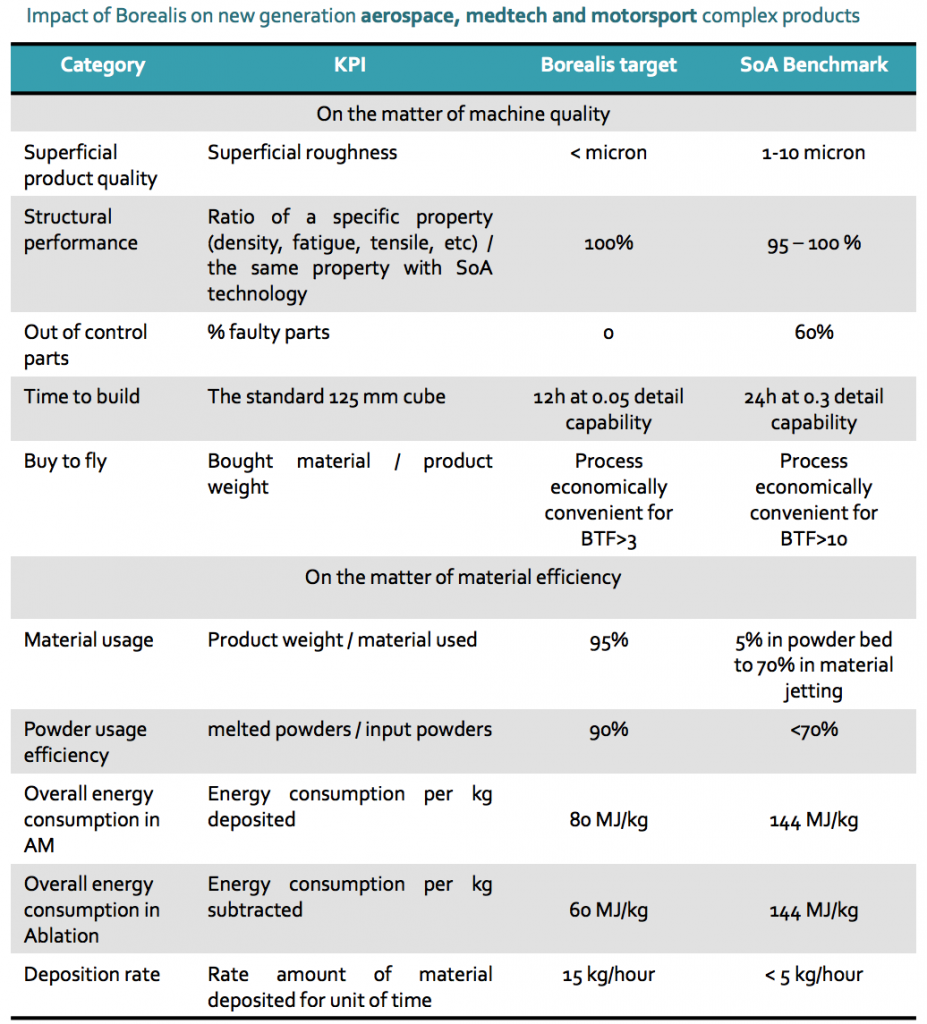Borealis Project Looks to Create Large, Super Fast 3D Metal Printers With Multiple Laser Technologies in One
Metal 3D printing is a technology that has been around for quite some time, but in that time, only very large corporations have had access to the great benefits that printing in metal can provide. We have continued to see many advances within the additive manufacturing / 3D printing space over the past decade, so it is of no surprise that Prima Industrie, an Italian based company that specializes in high power laser machines for industrial applications, is working on building a new innovative 3D printing system.
Called the Borealis Project, and coordinated by Prima Industrie in collaboration with a large group of multi-national companies, the project looks to create a machine capable of 3D printing with five different additive manufacturing technologies in order to create parts at a deposition rate of 2000cm3/h, with just 30 second set-up times. Some of the other participants in this project include Siemens, General Electric’s Avio Aero aviation business, Globotic Industries, Framos, IRIS, and the University of Patras, among others.
The base of the printer will be a gantry-style machine, coupled with a hexapod cup which multiple nozzles are connected. It will utilize powder bed technology and a special hybrid laser source which can cover a large range of space and perform multiple tasks at once. The hybrid laser features a combination of two highly efficient laser sources, one for sintering of the metal powders and a second for precise ablation and surface smoothing.
“We want to demonstrate that we can raise the current limits of additive manufacturing of metal components,” said Ezio Basso, CEO of Prima Power in a talk he recently gave during the AM Conference in Cecimo. “By the middle of 2016 we (Prima Industrie) will decide on the steps that we wish to take within the 3D printing market. By that time it should be clear how far this new technique has come. The project envisions the construction of a scale model, which should be ready by mid next year, and a working prototype on an industrial scale by 2019.”
The printers will be able to print on beds with volumes ranging from 250x250x250mm all the way up to 4500x2500x1000mm. They will also be able to print out super light structures using a three-step powder heating process.
“Borealis will minimize powder losses by guaranteeing a controlled atmosphere in the operative region thanks to a shielded working space that encapsulates all ejected powders and protects them from oxygen contact,” the project participants explained. “Borealis will implement a software infrastructure with the first working exploitation of a completely closed automatic in line CAx chain bound to the CNC to select the Best Available Processing Strategy and machine settings.”
Borealis will increase printing efficiency while also decreasing the amount of energy required to print an object. Power consumption is expected to be 40% less than what current technologies allow for. As well as the aforementioned ability to create surface finishes on printed objects, the printers will also have the ability to create micro texturing and micro holes in objects as well. This is because of the machine’s support for different laser based additive and subtractive technologies, which also means a 75% increase in material savings.
Borealis will also be equipped with a flexible revolver head that will allow users to blend multiple powders of different materials and differing particle dimensions, ultimately allowing for the printing of composite materials, and providing for much more flexibility in a product’s material properties.
The Borealis Project has not yet reached all of its goals, but then again, it is a 3-year project which just started earlier this year. In its current state, Basso says that the printers can print larger objects (less than 1500 mm in length) at 300 grams per hour, and smaller objects (less than 250 mm in lenghth) at a rate of 700 grams per hour. The final goal though is to print at a rate of 2 kilograms per hour, in creating objects up to 2000mm in length.
It will be very interesting to follow the development of the Borealis project as it evolves. The idea of having these new super 3D printers could mean a lot for the manufacturing industry. What do you think about this project? Will they reach their goals? What advantages does this technology have for the 3D printing industry? Discuss in the Borealis Project forum thread on 3DPB.com.
Subscribe to Our Email Newsletter
Stay up-to-date on all the latest news from the 3D printing industry and receive information and offers from third party vendors.
You May Also Like
Precision at the Microscale: UK Researchers Advance Medical Devices with BMF’s 3D Printing Tech
University of Nottingham researchers are using Boston Micro Fabrication‘s (BMF) 3D printing technology to develop medical devices that improve compatibility with human tissue. Funded by a UK grant, this project...
3D Printing Webinar and Event Roundup: April 21, 2024
It’s another busy week of webinars and events, starting with Hannover Messe in Germany and continuing with Metalcasting Congress, Chinaplas, TechBlick’s Innovation Festival, and more. Stratasys continues its advanced training...
3D Printing Webinar and Event Roundup: March 17, 2024
It’s another busy week of webinars and events, including SALMED 2024 and AM Forum in Berlin. Stratasys continues its in-person training and is offering two webinars, ASTM is holding a...
3D Printed Micro Antenna is 15% Smaller and 6X Lighter
Horizon Microtechnologies has achieved success in creating a high-frequency D-Band horn antenna through micro 3D printing. However, this achievement did not rely solely on 3D printing; it involved a combination...



































